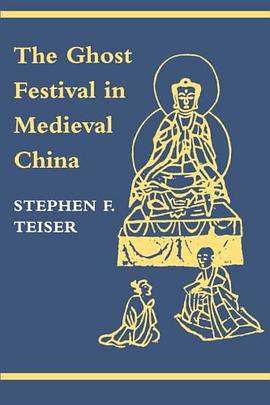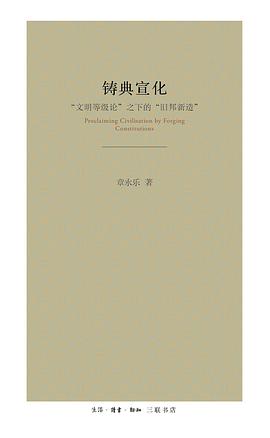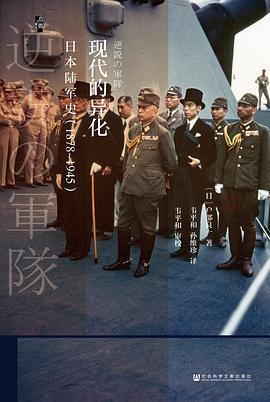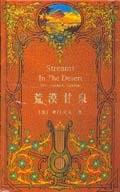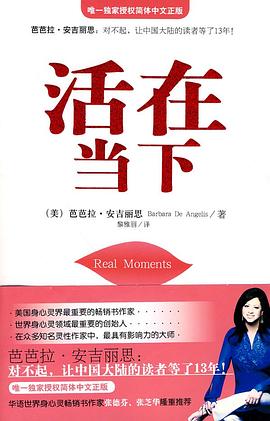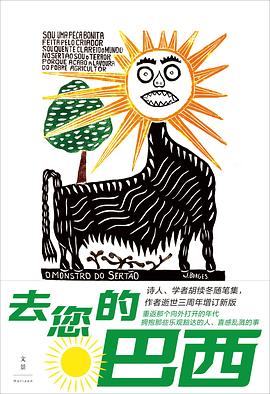The Ghost Festival in Medieval China
内容简介
Largely unstudied until now, the religious festivals that attracted Chinese people from all walks of life provide the most instructive examples of the interaction between Chinese forms of social life and the Indian tradition of Buddhism. Stephen Teiser examines one of the most important of such annual celebrations. He provides a comprehensive interpretation of the festivities of the seventh lunar month, in which laypeople presented offerings to Buddhist monks to gain salvation for their ancestors. Teiser uncovers a wide range of sources, many translated or analyzed for the first time in any language, to demonstrate how the symbolism, rituals, and mythology of the ghost festival pervaded the social landscape of medieval China. "Teiser offers an excellent study of the role of the festival in medieval (third-to-ninth centuries) Chinese religious life.... [A] vibrant portrayal of the living faith of a large portion of medieval China.... His transcendence of traditional boundaries between Buddhilogy and sinology have set a new standard for future studies of Chinese religion.
......(更多)
作者简介
作者太史文(Stephen F. Teiser),普林斯顿大学铃木大拙讲座教授、宗教学系终身教授。
太史文早年毕业于欧柏林学院,后就读于普林斯顿大学宗教学系,主攻东亚宗教,1986年获博士学位。太史文的博士论文题目为《中国中世纪的盂兰盆节》,这篇论文为他今后研究中国中世纪的民间信仰打下了基础,1988年,他在原博士论文的基础上修订出版了他的成名作——《中国中世纪的鬼节》(The Ghost Festival in Medieval China, Princeton University Press, 1988)。
译者侯旭东,清华大学人文学院历史系教授。
北京师范大学历史系博士,历任中国社会科学院历史研究所研究员、清华大学人文学院历史系教授。曾在美国哈佛大学、台湾“中研院”历史语言研究所做访问学人。主要研究魏晋南北朝史,兼及秦汉。先后从事东晋南朝经济史、北朝民众佛教信仰与乡村社会研究。近年关注简牍,尤其是新出土的湖南长沙三国吴简的研究,并致力于探索汉魏六朝的国家形态与统治机制。
......(更多)
目录
Preface xi
Acknowledgments xv
Abbreviations xvii
Introduction 3
The Spread of the Ghost Festival 3
The Significance of the Ghost Festival 10
The Forms of Religion in Chinese Society 15
The Place of Buddhism in Chinese Society 20
The Prehistory of the Ghost Festival 26
Antecedents in Indigenous Chinese Religion 27
The Monastic Schedule 31
Taoist Parallels 35
Conclusions 40
An Episodic History of the Ghost Festival in Medieval China 43
The Canonical Sources: The Yu-lan-p'en Sutra and The Sutra on Offering Bowls to Repay Kindness (CA. 400--500) 48
Tsung Lin's Record of Seasonal Observances in Ching-ch'u (ca. 561) 56
The Pure Land Yu-lan-p'en Sutra (ca. 600--650) 58
Hui-ching's Commentary Praising the Yu-lan-p'en Sutra (ca. 636--639) 63
Tao-shih's Memorandum on Offerings to the Buddha (ca. 668) 66
Yang Chiung's ``Yu-lan-p'en Rhapsody'' (692) 71
eovernment Offerings According to the T'ang liu-tien (ca. 739) 77
The Celebration under Emperor Tai-tsung in 768 78
Poems and Celebrations under Emperor Te-tsung (r. 779--805) 83
The Transformation Text on Mu-lien Saving His Mother from the Dark Regions (ca. 800) 87
Tsung-mi's Commentary on the Yu-lan-p'en Sutra (ca. 830) 91
The Suppression of Yu-lan-p'en in 844 95
The Lecture Text on the Yu-lan-p'en Sutra (ca. 850) 99
Chih-yuan's ``Hymns in Praise of lan-p'en'' (ca. 1020) 103
Postscript: the Ghost Festival after T'ang Times 107
The Mythological Background 113
An Example 114
Mu-lien's Biography 116
Hungry Ghosts 124
Mothers and Monks 130
Conclusions 134
Appendix:The Buddha's Ascension to the Heaven of Thirty-three to Preach to His Mother 136
Mu-lien as Shaman 140
The Chinese Background 141
The Buddhist Background 147
Mu-lien as Shaman 157
Conclusions 167
The Cosmology of the Ghost Festival 168
The Cosmology of the Transformation Text on Mu-lien Saving His Mother 170
Ghost Festival Cosmology in Context 179
Conclusions 190
Buddhism and the Family 196
The Bonds of Kinship 197
The Power of Monks 203
Conclusions 208
Concluding Perspectives 214
A Sociological Perspective 214
A Ritual Perspective 217
An Historical Perspective 221
Character Glossary of Chinese, Korean, and Japanese Words 225
Bibliography 231
Index 265
......(更多)
读书文摘
(目连)将僧人所特有的严毅、目光远大与浪游冥界镇魔降鬼者的特性集于一身。两类特性能够吸引两种不同的听众:一方面是僧众及朝廷,他们艳羡他在封闭背景下沉着上天入地的能力;另一方面,对绝大多数中国人来说,目连游魂在天上地下搏斗,他扮演了灵媒的角色。类似于世界其他地区的萨满,鬼节神话中塑造的目连同时符合精英与大众对神圣力量的构想。
流行的理解是“盂兰”为一外来语,描绘倒悬于冥间地狱中的人们的可怜命运,“盆”属中文词,指放置供品的钵或盘。因此,常用“盂兰盆”指意在度祖先脱离地狱倒悬之厄运而置放供品施与僧众的“钵”。
......(更多)
